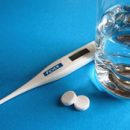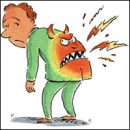Under osteoporosis understand the decrease in the mineral density of bone tissue and the violation of its structure.
A little anatomy
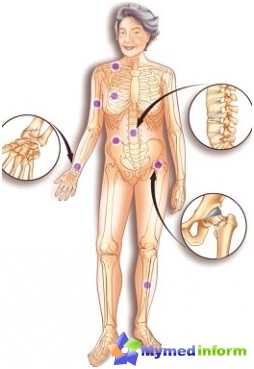
Bone tissue consists of a protein basis in which mineral substances are skillfully woven - calcium and phosphorus in the form of hydroxyappatitis, as well as some magnesium, copper, silicon, fluorine, manganese.
This is a dynamic system that is constantly updated due to special cells: osteoclasts that destroys the old bone, and osteoblastam synthesizing a new. Full update of our skeleton is carried out in about 10 years.
Calcium is the main element that gives hardness and durability. Thanks to this, our skeleton is able to withstand not only the weight of his own body, but also significant stretching loads, deformation, compression, for example, when transferring weights or fall. With osteoporosis, the balance between the destruction of the old bone tissue and the synthesis of the new, the calcium is washed away, «support» becomes fragile.
Thus, the main risk of osteoporosis is fractures that arise for no reason or with a slight injury, for example, falling from a height of less than its growth. The most typical fractures during osteoporosis - the fracture of the radial bone in «typical place» (wrist); hips, especially the neck of the thigh; vertebrae in lumbar and thoracic. If the fracture of the radial bone is not so terrible, then the fractures of the spine or hips are leading to the loss of the ability to move independently for a long time, and in old age they may have catastrophic consequences. They heal they are very difficult.
Who is in the risk group?
First of all - women after the onset of menopause.
The function and strength of the bone is a great influence of the function of the genital glands, especially in women. Estrogens have a protective, strengthening effect on the bone. With a decrease in their number (menopause) there is a progressive loss of minerals and a change in the microarchitectonics of the skeleton, leading to increased fragility and risk of fractures. The extinction of androgenic functions in men acts in the same way, but to a lesser extent.
According to statistics, about 35% of women and 24% of men older than 50 have osteoporosis (the so-called primary).
The earlier menopause comes, the earlier the durability of the bone begins to decrease. If, due to the disease, an operation was carried out with the removal of appendages at a young age, the osteoporosis will develop from youth.
The second prevalence group of the causes of osteoporosis (the so-called secondary) - the presence of a disease leading to a disorder of the bone structure or requires serious therapy with certain drugs. Here are some such states:
- Diabetes.
- Hypogonadism (underdevelopment and / or reduced function of the germ).
- Syndrome and Incenko Cushing's disease (excessive products of own steroid hormones).
- Hyperparathyroidism (increased function of the parachitoid glands).
- Connective tissue diseases: rheumatoid arthritis, system red lupus, etc. The disease itself often badly affects the strength of the bone, and in addition, such patients are often forced to take glucocorticoids, one of whose side actions - osteoporosis.
- Chronic renal failure.
- Blood diseases (lymphoma, leukemia, myeloma disease) and cytostatic therapy.
Still, most often and doctors and patients deal with primary, «Age» Osteoporosis. However, it is not developed at all. Why is one person there is a tendency to fractures, and the other will live to deep old age «integer»? How to determine if you need to take protection and prevention measures?
Factors provoking the development of osteoporosis
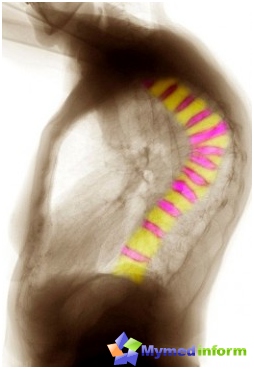
In principle, yes, but changes on the radiograph appear quite late when it is lost from 20% of bone mass and more, t.E. For early diagnosis and prevention, this method is not very suitable. The effects of osteoporosis are visible on the radiograph: change the shape of the vertebrals, cracks, deformations and fractures themselves.
Thus, diagnose osteoporosis and track the effectiveness of treatment should be using specific methods.
Whether osteoporosis is manifested by clinically, some symptoms?
Unfortunately, early symptoms of osteoporosis does not exist. Mostly symptoms appear late when complications arise.
Pain often accompanies osteoporosis, it occurs during deformation of the bodies of the vertebrae, a decrease in their height, when the vertebrae and their processes begin to give the nervous roots, and of course Fracture. In this case, the so-called compression fractures are characteristic when a transverse line of a sloda appears in the vertebral, it is pushing under weight, it seeks, acquiring a wedge-shaped form. Pain syndrome can be quite stubborn. The spinal cord is usually not damaged.
If there are several vertebrae in this way, the human growth is reduced, the waist is smoothed, the back becomes round, the ribs are approaching the pelvic bones. In severe cases, hump is formed.
Pains are accompanied by neurological violations: paresthesia, numbness of the leather limbs, convulsions.
The most terrible complication of osteoporosis - the fracture of the neck of the thigh. The femoral bone along with the spine carries the main load on the mass and, in addition, the movement without it is impossible. Older people need to try to avoid such an injury leading to disability.
Treatment and prevention of osteoporosis
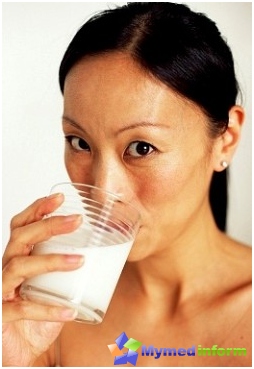
First, all people need to try to get the maximum bone mass at younger age, so that it was enough for an active longevity. To do this, it is necessary to avoid the risk factors of osteoporosis (see. higher).
However, proper nutrition, rational physical exertion, healthy lifestyle are relevant at any age. These are not only prevention measures, but also the key to successful treatment of osteoporosis.
Daily need for calcium - 1000-1500 mg per day. This amount is contained in approximately 6 glasses of milk or fermented milk products (ipain, kefir), 1.5 kg of cottage cheese, 200 g of solid cheese. In fish, nuts, color and sea kale there are also calcium, but less and digested from them harder than milk.
Not all people carry milk in such quantity or love cottage cheese. Therefore, it is necessary to replenish the deficit of this important element in the reception of the respective drugs, the combination of calcium and vitamin D (calcium-d3-nicomed, complivit calcium-D3) is especially effective.
It should be borne in mind that the favorite calcium gluconate is very low digestibility, the polyvitamins are also not suitable (the concentration there is too small for the preventive and therapeutic effect).
In addition, in the treatment of osteoporosis, other means must also be taken, directly slowing the destruction of the bone and improving it synthesis. Currently, there are quite a lot of appropriate drugs, different by the mechanism of action, price, multiplicity of reception. All are safe enough and effective. What kind of medicine you need to decide the doctor!
Groups of drugs for the treatment of osteoporosis
- Bisphosphonates:
- Alendronat (Fosamaks, Ostal, Osterar, Tucanate, Forozer);
- Ibandronate (Bonviva, Bondronat);
- Risedronate (Aktonel);
- custodic acid (blazer);
- Renelit strontium (Bivalulos).
- Calcitonin: Synthetic calcitonin salmon (Miakalcik, Veprena).
- Pararatoid Hormone (Forsto).
- Denosuumab (Priary, Excidian).
- Estrogen-like substances (not hormones!): Raokaloxifen (Evista).
They slow down the resorption (resorption) of the bones, have a persistent effect even after the cessation of treatment.
Enhances the formation of bones, prevents its destruction.
Prevents resorption, has a good painkillers effect.
Stimulates costh formation.
Depresses bone resorption.
In some cases, the use of substitution hormone therapy is possible (in young women with early, including surgical, menopause).
In numerous studies, we have shown abroad that antipersorbative therapy significantly increases the bone mineral density by 3-12% in different parts of the skeleton, which is accompanied by a decrease in the frequency of fractures by 37-49%. However, to achieve such a good result, it is necessary to carefully comply with the recommendations of the doctor at a dose, multiplicity, reception duration. Independent reduction in dose, reception every other day and.NS. - reduces the effect of the drug for no. Our site recommends - Tune in for long-term treatment. The result is your vigor, young posture, activity and longevity!
be healthy!







